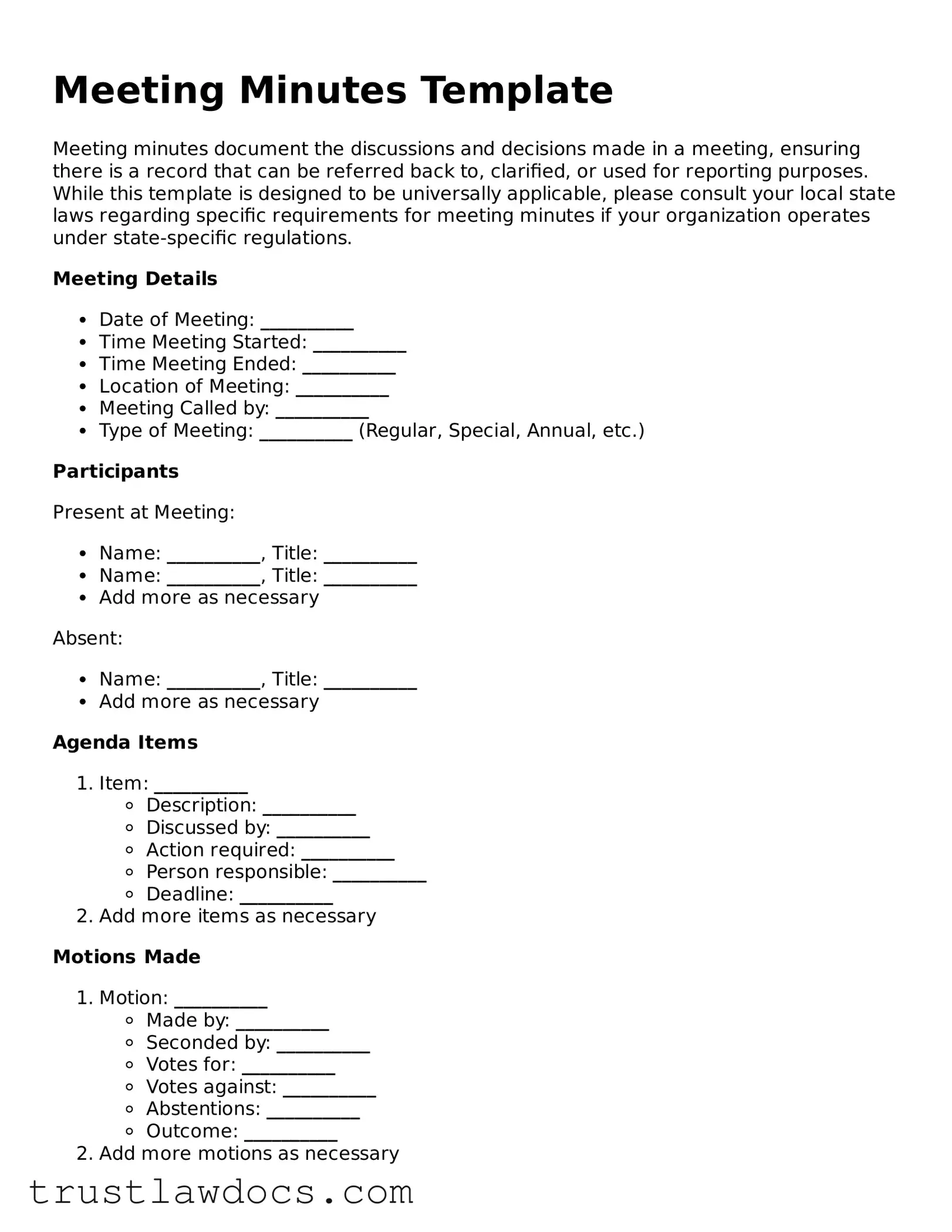What are Meeting Minutes and why are they important?
Meeting Minutes are a written record of everything that's discussed and decided in a meeting. They're important because they provide an official, accurate account that can be referred to later. They help keep track of decisions made, actions to be taken, and who is responsible for what. This ensures everyone is on the same page and accountable, helping projects stay on track.
What should be included in Meeting Minutes?
Meeting Minutes should include the date and time of the meeting, the names of attendees, any absentees, and a detailed account of the discussions held, decisions made, and actions agreed upon, including deadlines and the names of people responsible for carrying out those actions. It's also crucial to note any motions made, along with votes for and against, to ensure clarity and transparency.
Who is responsible for taking Meeting Minutes?
Typically, a designated minute-taker is responsible for recording the Meeting Minutes. This role is often assigned to a secretary or an administrative assistant, but any attendee can be designated to take the minutes. The key is that the minute-taker is present at the meeting and can accurately capture the discussions and decisions made.
How formal do Meeting Minutes need to be?
The level of formality in Meeting Minutes can vary depending on the organization and the type of meeting. However, they should always be clear, concise, and free of any personal opinions or irrelevant details. The focus should be on capturing the key points, decisions, and actions in a neutral and professional manner.
Can Meeting Minutes be corrected or amended?
Yes, Meeting Minutes can be corrected or amended if inaccuracies are identified. This is typically done at the start of the next meeting, where the minutes from the previous meeting are reviewed. Any corrections or amendments are noted and approved by the attendees before the revised minutes are finalized.
Are Meeting Minutes a legal document?
Yes, Meeting Minutes can serve as a legal document. They are an official record of the decisions made and actions agreed upon during a meeting. This can be particularly important for corporate board meetings, shareholders' meetings, or any other meetings where legally binding decisions are made. They can be used as evidence of compliance with laws and regulations, making their accurate and thorough preparation key.
